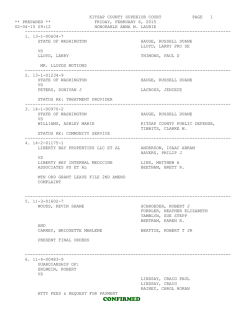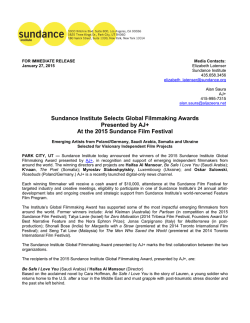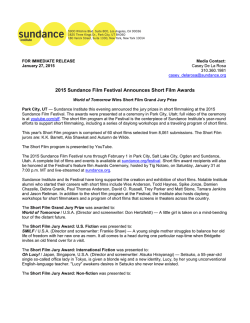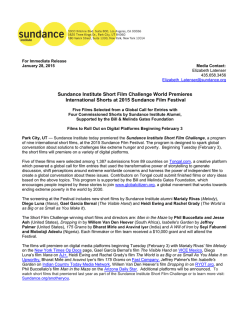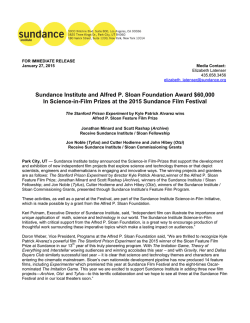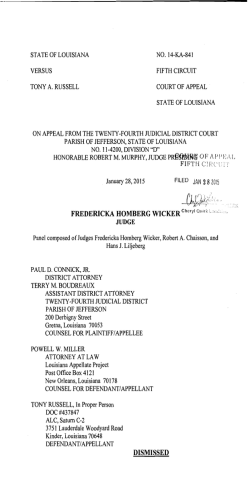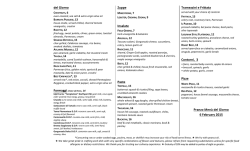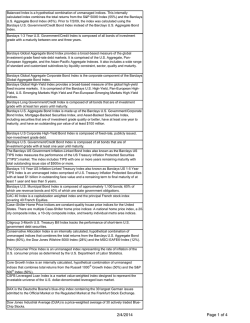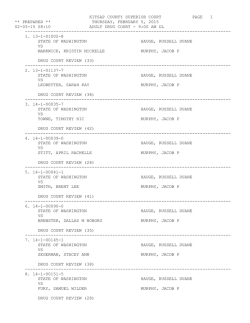
When Cowboys Get in Trouble
Lesson Plans When Cowboys Get in Trouble Charles M. Russell 1899 Oil on canvas, 24 x 36” CONCEPT Students will view, analyze and interpret the image. Students will learn that artists, through arrangement of characters in a setting, can create a moment of action and drama. DESCRIBE TEKS The SRM Educator Guide lessons support inquiry-based discussion and align with the Texas Essential Knowledge and Skills for art, history and English language arts. To select correlations for your grade level visit the Texas Education Agency TEKS website. VOCABULARY • Atmospheric Perspective - a method of implying depth and distance in a painting by using fading colors and hazy details in distant objects. • Composition - the arrangement of elements of an artwork to make an effective expression of the artist’s idea. • Symbol - a visual image that stands for something else, especially a letter, figure or a sign that represents a real object or idea. 21 Additional Lessons Sid Richardson Museum What is happening in this scene? Why is the white horse rearing up? What is the rider trying to do? What object is the rider reaching for with his right hand? What has caused the cow to charge the horse and rider? Why is the cow’s leg stretched out? Describe the action of the cowboy on the right. Describe the setting. What is in the background? How has the artist implied distance? INQUIRE Find the letters on the side of the cow. (N-N, pronounced “N BAR N”). The letters are a symbol called a brand. Brands were used by ranchers to indicate the owner of a particular cow. SUPPOSE Suppose you were in this scene. Can you finish the story in the painting? Describe what will happen next to the three Lesson designed for use with Home on the Range: An Educator’s Guide. cowboys and their horses. The artist, Charles Russell, was a night wrangler. While not talented as a cowpuncher, he admired the top hands he came to know, and riding and roping scenes became staple subjects in his artwork. (Review the biographical information included in Home on the Range: An Educator’s Guide). How would Russell’s experiences as a cowboy make him better qualified to depict this subject matter? INFORM Russell worked for the N-N Ranch, begun by brothers William and Frederick Niedringhaus, who bought land on the open ranges of Montana and New Mexico in 1885. EXTEND See pg. 42- 43 Design a symbol to place next to your signature on your artworks. What does your symbol signify? Compare When Cowboys Get in Trouble with Cowpunching Sometimes Spells Trouble, painted in 1889. The Sundance Kid and partner Butch Cassidy and their gang committed the longest string of bank and train robberies in the history of the Old West. The gang ended up in Ft. Worth, where they had a group portrait taken. This photograph, circa 1900, was later made famous…for its use in “Wanted” posters! In the photograph, the outlaws appear to be proper businessmen. Locate the Sundance Kid (front row, on the far left), and his partner, Butch Cassidy (front row, on the far right). The Sid Richardson Museum is located in Sundance Square, named for the Sundance Kid and partner Butch Cassidy, who were notable visitors. Lesson designed for use with Home on the Range: An Educator’s Guide. C. Russell, Cowpunching Sometimes Spells Trouble 1889 Additional Lessons Sid Richardson Museum 32 Lesson Plans Also, the brothers employed Harry Longabaugh, known as the “Sundance Kid”. Longabaugh worked for the ranch as a nineteen year old cowboy in 1886. After helping with a cattle drive, he joined a ranch based in Wyoming, where he committed his first crime, stealing a horse. After spending time in prison, he returned to the N-N in 1892. However, his identity was soon discovered, and he ran away. Wild Bunch or Hole in the Wall Gang, Photograph, n.d. The Portal to Texas History http://texashistory.unt.edu/ark:/67531/metapth55980/m1/1/
© Copyright 2024
